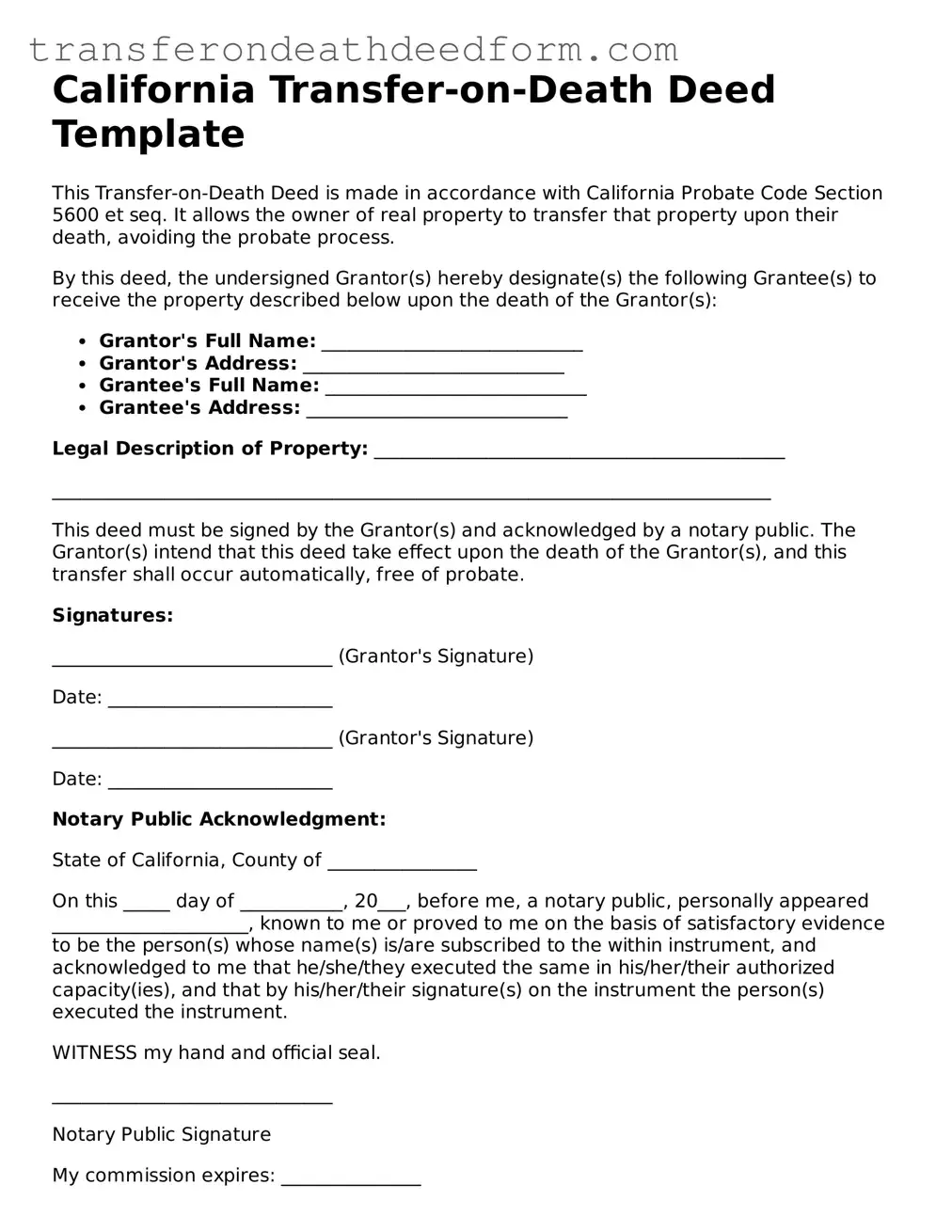California Transfer-on-Death Deed Template
This Transfer-on-Death Deed is made in accordance with California Probate Code Section 5600 et seq. It allows the owner of real property to transfer that property upon their death, avoiding the probate process.
By this deed, the undersigned Grantor(s) hereby designate(s) the following Grantee(s) to receive the property described below upon the death of the Grantor(s):
- Grantor's Full Name: ____________________________
- Grantor's Address: ____________________________
- Grantee's Full Name: ____________________________
- Grantee's Address: ____________________________
Legal Description of Property: ____________________________________________
_____________________________________________________________________________
This deed must be signed by the Grantor(s) and acknowledged by a notary public. The Grantor(s) intend that this deed take effect upon the death of the Grantor(s), and this transfer shall occur automatically, free of probate.
Signatures:
______________________________ (Grantor's Signature)
Date: ________________________
______________________________ (Grantor's Signature)
Date: ________________________
Notary Public Acknowledgment:
State of California, County of ________________
On this _____ day of ___________, 20___, before me, a notary public, personally appeared _____________________, known to me or proved to me on the basis of satisfactory evidence to be the person(s) whose name(s) is/are subscribed to the within instrument, and acknowledged to me that he/she/they executed the same in his/her/their authorized capacity(ies), and that by his/her/their signature(s) on the instrument the person(s) executed the instrument.
WITNESS my hand and official seal.
______________________________
Notary Public Signature
My commission expires: _______________
